Transform Your Backyard into a Self-Sufficient Paradise
Transforming your backyard into a self-sufficient paradise not only connects you with nature but also offers numerous benefits. This article will guide you through the process of creating a sustainable backyard, maximizing food production, raising livestock and poultry, managing water efficiently, implementing renewable energy solutions, composting and waste management, creating wildlife-friendly habitats, harvesting and preserving, natural pest control, managing soil fertility, engaging kids in backyard self-sufficiency, connecting with the community, budgeting and cost considerations, overcoming common challenges, maintaining balance and enjoyment, addressing frequently asked questions, and ultimately empowering you to embark on your own self-sufficient journey.
Assessing Your Backyard
Before diving into transforming your backyard, it’s crucial to assess the available space and identify any potential limitations and challenges. This will ensure that your self-sufficient paradise is optimized for success.
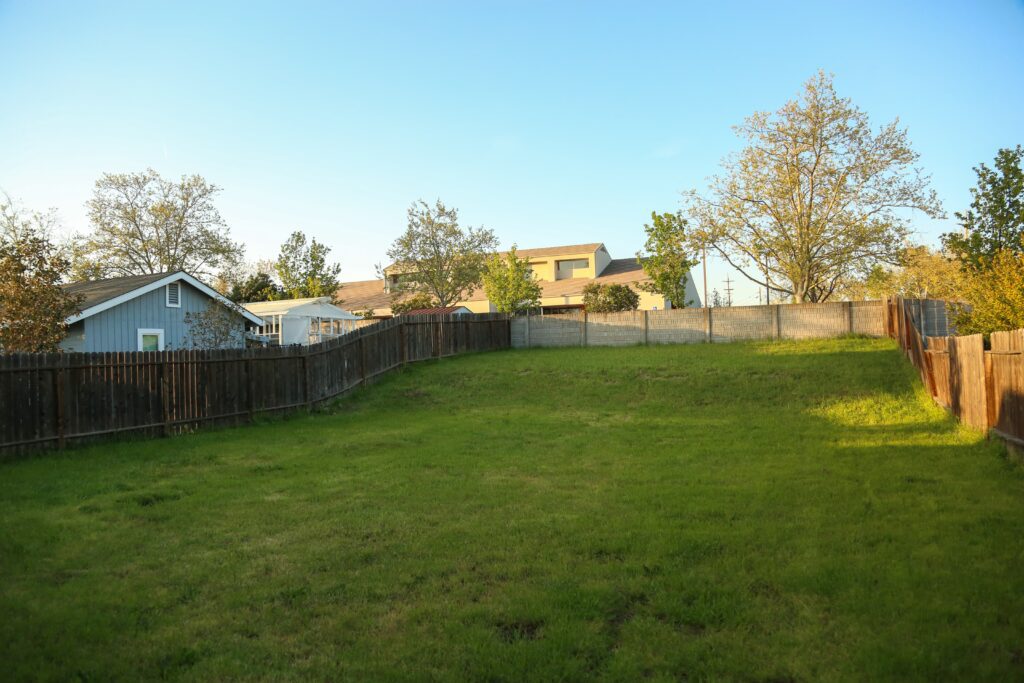
Evaluating Available Space
Begin by examining the size and layout of your backyard. Consider any existing structures, trees, or obstacles that may impact your design plans. Take measurements to determine how much space you have for various activities such as gardening, raising livestock, or installing renewable energy systems.
Identifying Potential Limitations and Challenges
Next, assess any limitations or challenges your backyard may present. Factors like limited sunlight, poor drainage, or noise pollution from nearby sources can influence your ability to create a fully self-sufficient oasis. Understanding these obstacles will help you develop appropriate solutions to overcome them.
Designing a Sustainable Backyard Layout
Designing an efficient and sustainable layout for your backyard is crucial for long-term success. Drawing inspiration from permaculture principles and planning for different zones will ensure a harmonious and productive space.
Taking Inspiration from Permaculture Principles
Permaculture principles emphasize the creation of self-sustaining ecosystems that mimic natural patterns and processes. By employing techniques such as companion planting, water conservation, and minimizing waste, you can create a holistic and regenerative environment in your backyard.
Planning for Different Zones in Your Backyard
Dividing your backyard into different zones serves various purposes and optimizes efficiency. For example, you may designate areas for food production, livestock, composting, and relaxation. This zoning approach allows you to maximize the use of space while ensuring each element of a self-sufficient backyard is given the attention it deserves.
Maximizing Food Production
Growing your own food is one of the most rewarding aspects of self-sufficiency. By employing diverse techniques and strategic planning, you can maximize your food production and enjoy a bountiful harvest throughout the year.
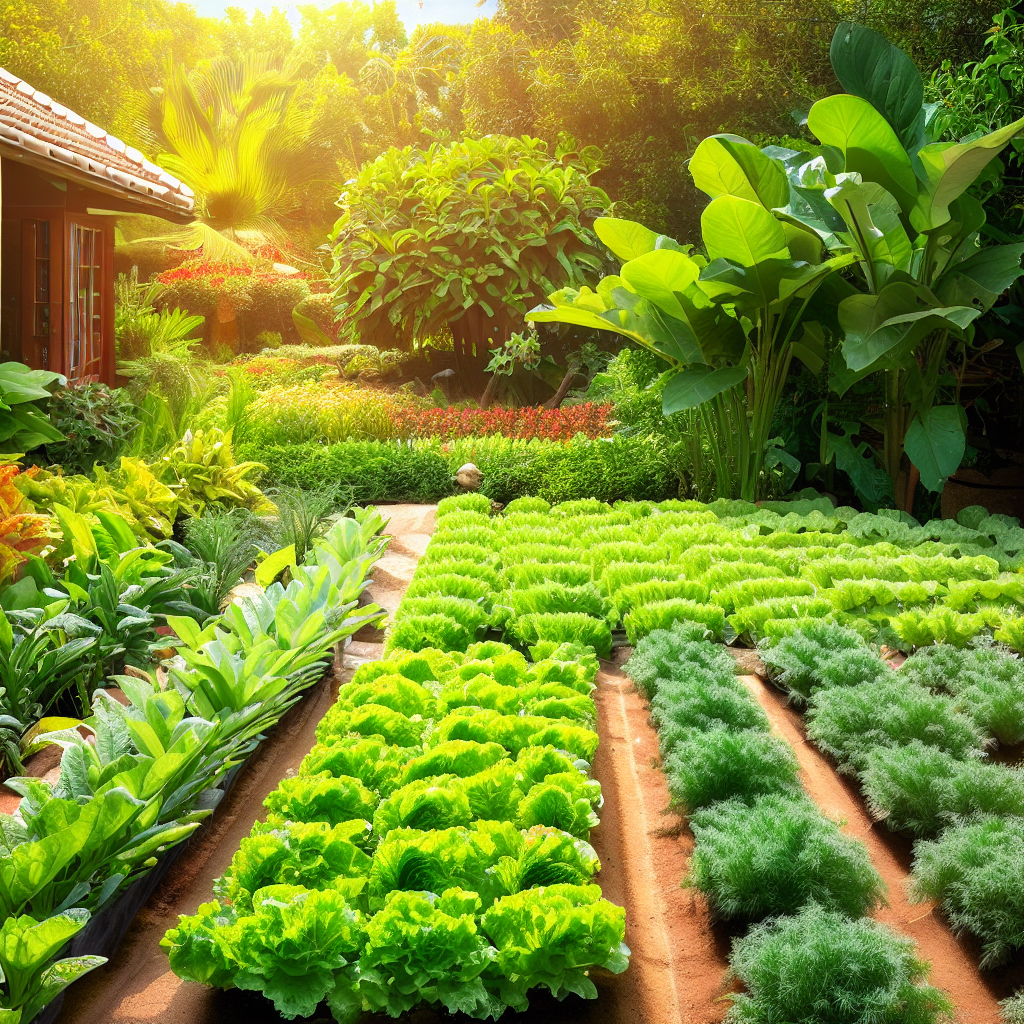
Growing a Diverse Range of Fruits and Vegetables
Choose a diverse range of fruits and vegetables suited to your local climate and growing conditions. By cultivating a variety of crops, you can ensure a continuous supply of fresh produce and enhance the biodiversity of your backyard.
Utilizing Companion Planting Techniques
Companion planting involves strategically pairing compatible plants to enhance growth and repel pests. For example, planting aromatic herbs like basil alongside tomatoes can deter harmful insects. This technique minimizes the need for chemical pesticides and promotes a healthy and balanced ecosystem.
Incorporating Vertical Gardening for Space Optimization
Vertical gardening is an efficient way to maximize limited space. By utilizing walls, trellises, and other vertical structures, you can grow crops like tomatoes, cucumbers, and beans upwards, freeing up valuable ground space for other plants or activities.
Raising Livestock and Poultry
Incorporating livestock and poultry into your backyard can further enhance self-sufficiency by providing a sustainable source of meat, eggs, and other essential products. However, careful considerations must be made to ensure the well-being of the animals and compliance with local regulations.
Selecting Appropriate Livestock for Your Backyard
Choose livestock species that are suitable for your backyard’s size and local regulations. Chickens, rabbits, and goats are popular choices due to their adaptability and relatively small space requirements. Conduct thorough research and consult with local experts to determine the best fit for your self-sufficient paradise.
Ensuring Proper Shelter and Care
Providing adequate shelter, food, and water for your livestock is essential for their well-being. Consider building appropriate enclosures or coops that protect against predators and harsh weather conditions. Regularly monitor and maintain their living conditions to ensure a healthy and thriving animal population.
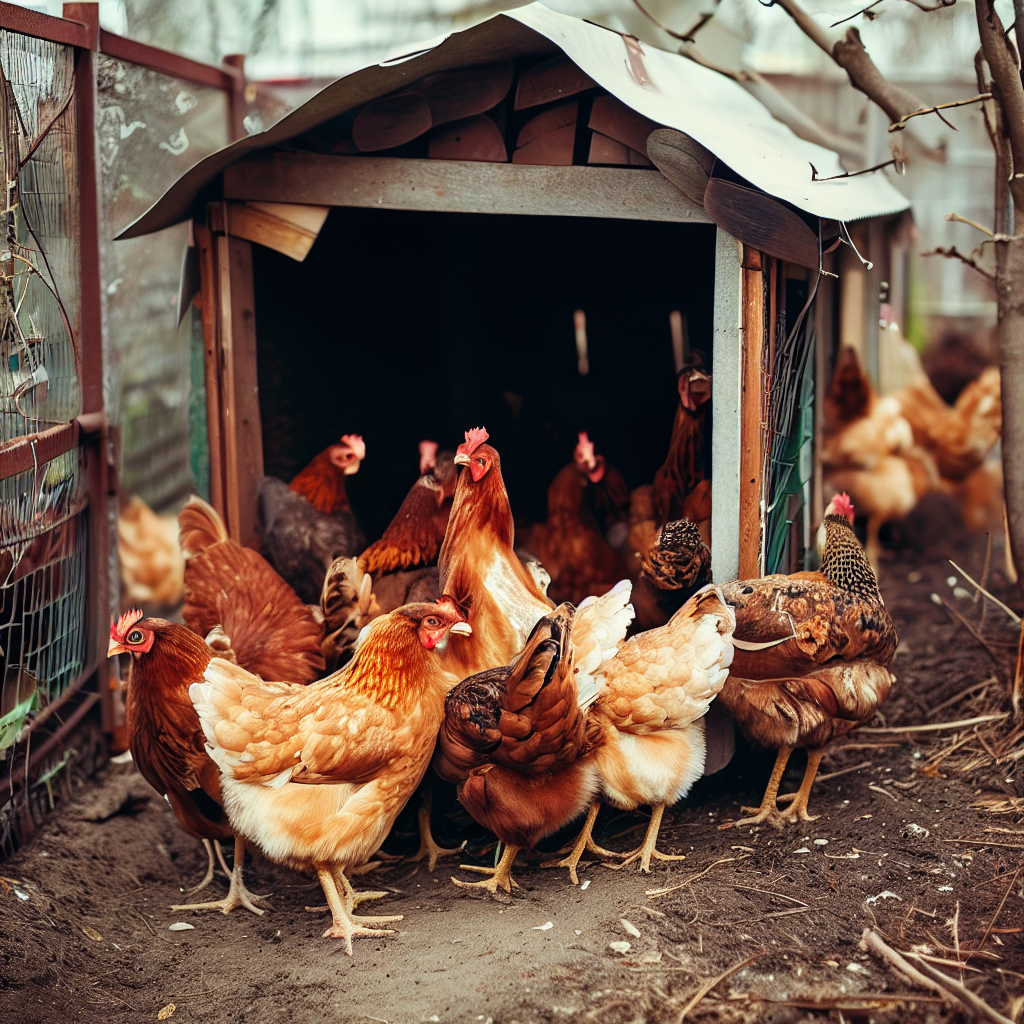
Understanding Local Regulations and Permits
Before introducing livestock into your backyard, familiarize yourself with local regulations and obtain any necessary permits or licenses. Regulations regarding the number and type of animals allowed, as well as zoning restrictions, vary from region to region. Compliance with these regulations ensures a harmonious relationship with your neighbors and local authorities.
Water Management
Efficient water management is a core aspect of self-sufficiency. By implementing rainwater harvesting systems, utilizing efficient irrigation techniques and tools, and ensuring proper drainage, you can minimize water waste and enhance the resilience of your backyard ecosystem.
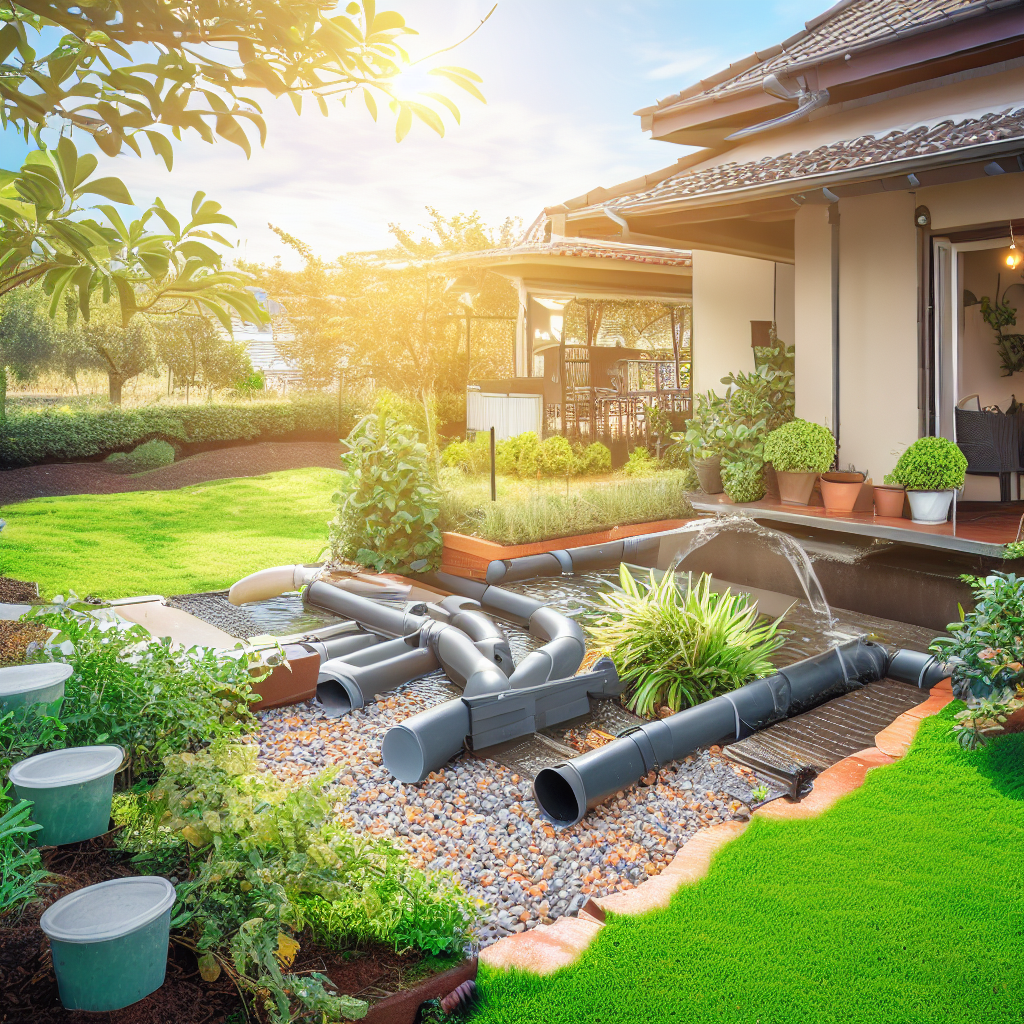
Implementing Rainwater Harvesting Systems
Rainwater harvesting is a sustainable method of collecting and storing rainfall for later use. Install rain barrels or tanks to capture rainwater from roofs or other surfaces. This collected water can then be used for various purposes such as watering crops, providing drinking water for animals, or even powering small-scale hydroponics systems.
Efficient Irrigation Techniques and Tools
Utilize irrigation techniques such as drip or micro-irrigation to minimize water loss through evaporation and ensure targeted delivery to plant roots. Consider using smart irrigation systems that adjust watering based on weather conditions and plant needs, thereby optimizing water usage.
Importance of Proper Drainage
Proper drainage is crucial to prevent waterlogging and soil erosion. Ensure your backyard has adequate drainage systems in place, such as swales, berms, or French drains, to efficiently manage excess water during heavy rainfall.
Renewable Energy Solutions
Incorporating renewable energy solutions into your self-sufficient backyard reduces your reliance on conventional energy sources and contributes to a more sustainable lifestyle. Exploring solar and wind energy options, setting up small-scale solar power systems, and using energy-efficient lighting and appliances are all steps you can take towards energy independence.
Exploring Solar and Wind Energy Options
Assess your backyard’s solar and wind potential to determine the feasibility of each renewable energy option. Solar panels can be installed on rooftops or even mounted on the ground, while wind turbines require open spaces and specific wind conditions. Research local incentives and consult with professionals to determine the best approach for your backyard.
Setting up a Small-Scale Solar Power System
If solar energy proves to be a viable option, consider installing a small-scale solar power system. This typically involves PV (photovoltaic) panels, an inverter to convert solar energy into usable electricity, and a battery storage system to store excess energy for times of low sunlight. Consult with an experienced solar installer to design a system that meets your specific energy needs.
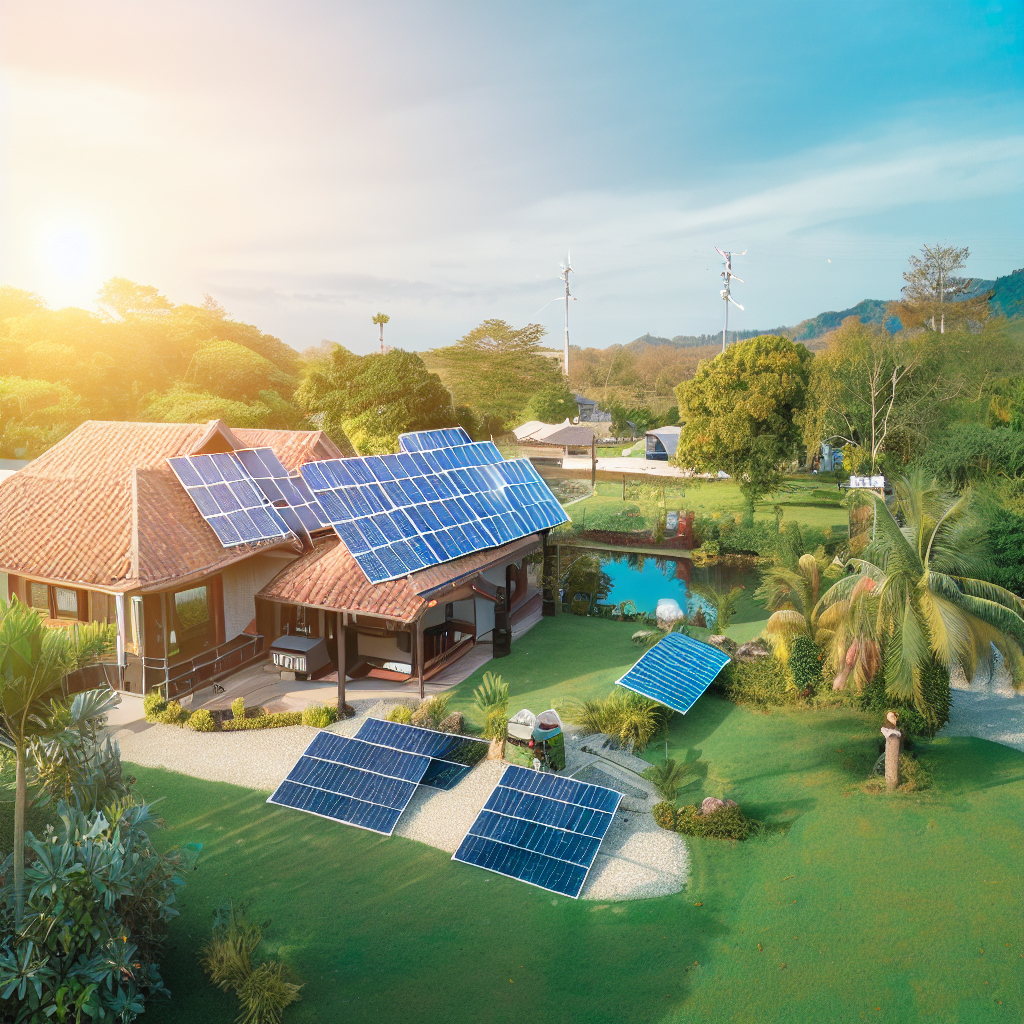
Energy-Efficient Lighting and Appliances
To further reduce your energy consumption, replace traditional incandescent bulbs with energy-efficient LED lights. Additionally, opt for energy-efficient appliances when replacing old ones. These small changes can contribute significantly to the overall energy efficiency of your backyard self-sufficiency system.
Composting and Waste Management
Proper management of organic waste is essential for a self-sufficient backyard. Establishing a composting system, utilizing food scraps and garden waste productively, and ensuring responsible disposal of non-recyclable waste are all important aspects of waste management.
Establishing a Composting System for Organic Waste
Set up a composting system to turn kitchen scraps, yard waste, and other organic materials into nutrient-rich compost. Composting not only reduces waste but also improves soil fertility, making it an essential practice in a self-sufficient backyard. Consider using a combination of compost bins, vermiculture (worms), or even tumbler-style composters for efficient decomposition.
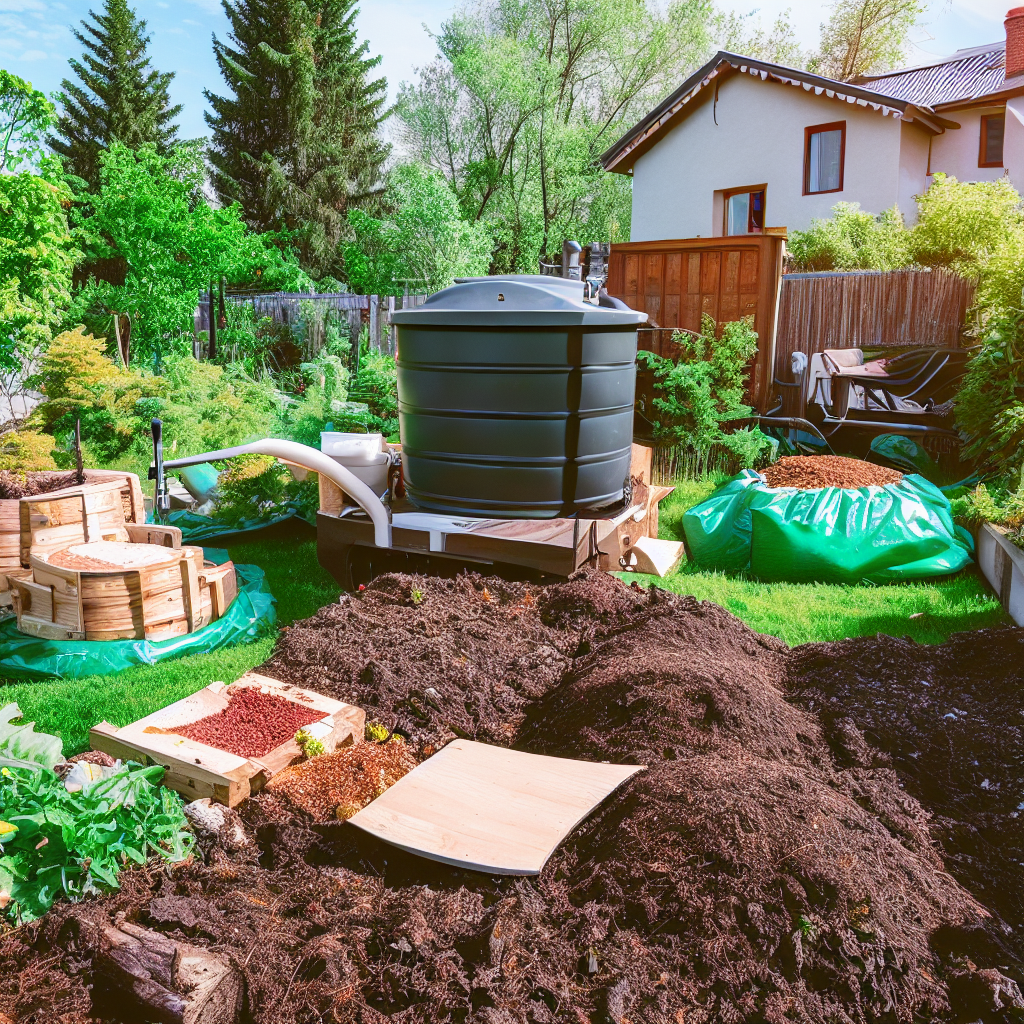
Utilizing Food Scraps and Garden Waste Productively
Instead of throwing away food scraps or garden waste, find creative ways to utilize them productively in your backyard. For example, use vegetable scraps for homemade vegetable stock or feed them to chickens or composting worms. Garden waste can be transformed into mulch or used as natural weed control.
Responsible Disposal of Non-Recyclable Waste
While striving for a self-sufficient backyard, not all waste can be recycled or repurposed. Properly dispose of any non-recyclable or non-compostable waste following local waste management guidelines. Explore alternative waste disposal options such as community recycling programs or waste-to-energy facilities in your area.

Creating a Wildlife-Friendly Habitat
Designing your backyard to support wildlife habitats not only enriches the biodiversity of your space but also contributes to a healthy and balanced ecosystem. By providing shelter, food, and water sources for wildlife, you can encourage beneficial species while managing potential pests.
Designing Wildlife-Friendly Features
Incorporate wildlife-friendly features such as bird feeders, bird baths, and butterfly gardens to attract diverse species of birds and pollinators. Incorporate native plants that provide food and shelter for local wildlife and create a welcoming environment for beneficial insects.
Providing Shelter, Food, and Water Sources for Wildlife
Consider installing birdhouses, bat boxes, or insect hotels to provide shelter for various wildlife species. Planting native trees and shrubs that produce berries or nuts can also serve as a food source. Additionally, providing a clean water source, such as a pond or shallow container, is essential for wildlife to thrive in your backyard.
Encouraging Biodiversity and Ecosystem Balance
By embracing biodiversity and incorporating wildlife-friendly practices, you can promote ecosystem balance. Beneficial insects, birds, and other wildlife play an important role in pollination, pest control, and overall ecosystem health. Emphasize the coexistence of different species and avoid harmful practices that disrupt natural balance.
Harvesting and Preserving
When the time comes to harvest the fruits of your labor, it’s important to employ proper techniques for maximum flavor and extend the shelf life of your produce. Understanding the methods for harvesting fruits, vegetables, and herbs, as well as various home food preservation techniques, will allow you to enjoy your backyard harvest year-round.
Proper Techniques for Harvesting Fruits, Vegetables, and Herbs
Harvesting at the correct stage of maturity ensures the best flavor and texture of your produce. Become familiar with optimal harvesting times for different crops to achieve peak flavor. Use sharp, clean tools when harvesting to minimize damage to plants.
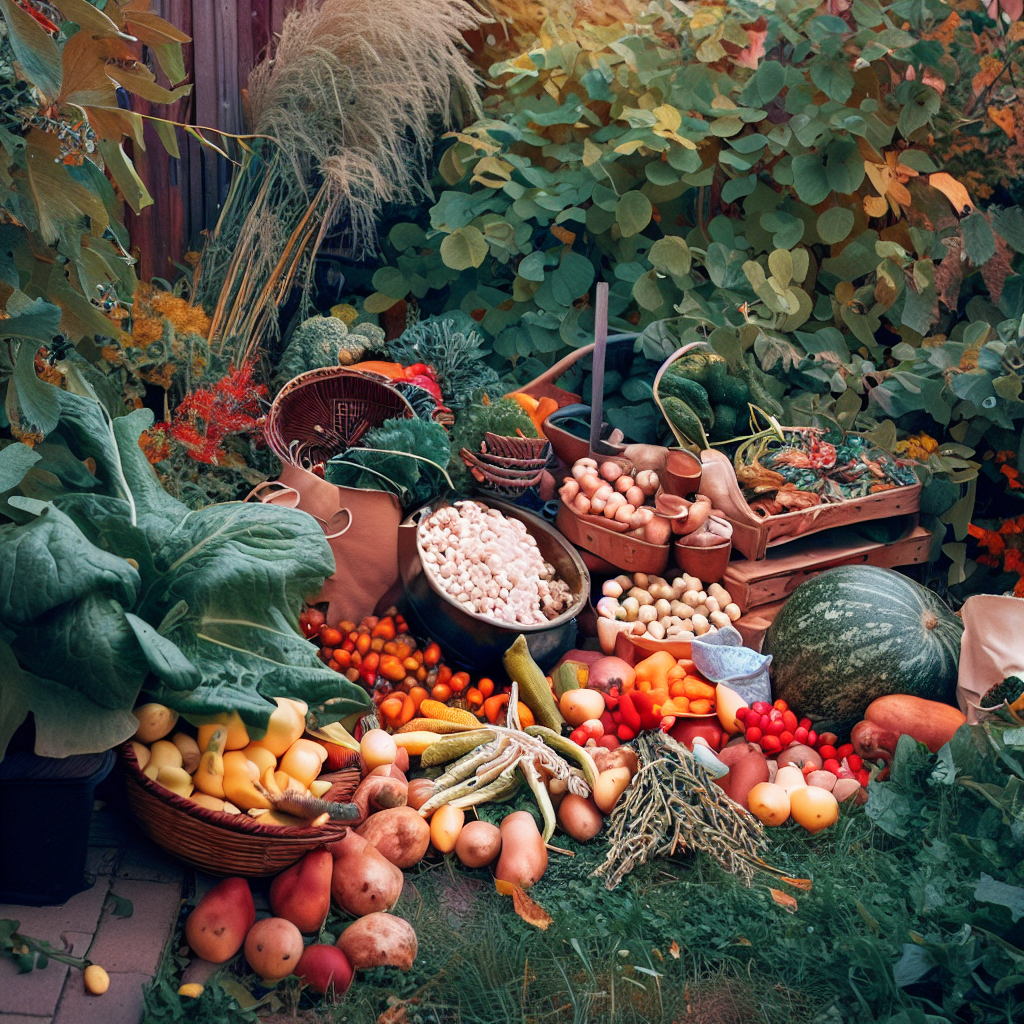
Home Food Preservation Methods: Canning, Pickling, and Drying
Preserving the surplus harvest is a valuable practice in a self-sufficient backyard. Learn various preservation methods such as canning, pickling, and drying. Canning allows fruits, vegetables, and even meats to be preserved in jars, while pickling preserves certain vegetables in vinegar or brine. Drying, on the other hand, involves removing moisture from produce to extend its shelf life.
Storing and Organizing Your Backyard Harvest
Proper storage and organization of your backyard produce will help it last longer. Consider using root cellars, coolers, or even makeshift storage solutions like hanging baskets or glass jars to keep produce fresh. Regularly check for spoilage and discard any spoiled items promptly to prevent contamination of the remaining harvest.
Natural Pest Control
Minimizing pest damage without resorting to harmful chemicals is a vital aspect of self-sufficiency. Integrated Pest Management (IPM) strategies, companion planting, and physical barriers or natural repellents can effectively control pests while maintaining a healthy ecosystem.
Integrated Pest Management (IPM) Strategies
Adopting an Integrated Pest Management approach involves using a combination of techniques to prevent and manage pests. This includes implementing good cultural practices, monitoring pest populations, and only resorting to pesticides as a last resort. By reducing reliance on chemical interventions, you can protect beneficial insects and maintain a healthy ecosystem.
Companion Planting for Pest Control
Strategic planting of certain plants can control pests naturally. For instance, planting marigolds alongside vegetables can discourage pests thanks to their natural repellent properties. Research companion planting techniques for specific crops to achieve effective pest control without resorting to toxic chemicals.
Implementing Physical Barriers and Natural Repellents
Physical barriers such as netting, row covers, or fences can effectively protect your crops from pests. Lightweight insect netting can deter flying insects, while row covers can physically block pests from reaching your plants. Additionally, certain natural repellents like garlic spray or neem oil can help repel insects without harming beneficial species.
Managing Soil Fertility
Healthy soil is the foundation of a productive and self-sufficient backyard. Understanding the importance of soil health, employing organic fertilizers and soil amendments, and practicing techniques to improve soil structure and fertility will ensure long-term success in your self-sufficiency journey.
Importance of Healthy Soil for a Self-Sufficient Backyard
Healthy soil is teeming with microorganisms, holds moisture effectively, and provides essential nutrients to plants. Regularly testing your soil and maintaining its health is crucial for optimal plant growth and high-quality yields. Leave behind harmful synthetic fertilizers and focus on nurturing your soil naturally.
Employing Organic Fertilizers and Soil Amendments
Organic fertilizers and soil amendments, such as compost, animal manure, or organic amendments like bone meal or kelp, provide essential nutrients while enhancing soil structure. These materials improve soil fertility, increase water retention, and promote beneficial microbial activity.
Practices to Improve Soil Structure and Fertility
Implement practices like crop rotation, cover cropping, and minimal tilling to improve soil structure and fertility. Crop rotation prevents the depletion of specific nutrients by alternating crops in different areas each season. Cover cropping involves planting temporary cover crops to protect and enrich the soil during periods of rest. Minimizing tilling helps preserve soil structure and prevents erosion while maintaining the delicate balance of soil organisms.
Engaging Kids in Backyard Self-Sufficiency
Teaching children about sustainable practices and involving them in backyard self-sufficiency is an excellent way to nurture their love for nature and instill valuable life skills. Hands-on activities and projects tailored for kids can excite and educate them about the environment.

Teaching Children About Sustainable Practices
Introduce children to the concept of sustainability early on by explaining the importance of caring for the environment and the connection between our actions and the well-being of our planet. Encourage them to ask questions and engage in dialogue about how their choices impact the world around them.
Hands-on Activities and Projects for Kids
Engage children in hands-on activities and projects that connect them with nature and self-sufficiency. Planting seeds, tending to a small vegetable garden, or caring for backyard chickens can instill a sense of responsibility and foster a connection to the natural world.
Nurturing Their Love for Nature and Self-Sufficiency
Encourage children to spend time in the backyard, exploring nature, and learning about the plants and animals that inhabit it. Foster a sense of wonder and curiosity while teaching them about the interconnectedness of all living things. Instilling a love for nature in children can set them on a lifelong journey of mindfulness and environmental stewardship.
Connecting with Community and Sharing Resources
Self-sufficiency doesn’t have to mean going it alone. Connecting with your local community through gardening and sustainability groups, participating in community gardens and seed exchanges, and sharing tools, knowledge, and surplus produce can enhance your self-sufficiency journey.

Joining Local Gardening and Sustainability Groups
Look for local gardening and sustainability groups in your area or online communities where you can connect with like-minded individuals. These groups offer a wealth of knowledge, resources, and support, enabling you to learn from experienced individuals and share your own experiences
Participating in Community Gardens and Seed Exchanges
Participating in community gardens and seed exchanges can be a great way to connect with others while expanding your own self-sufficiency. Community gardens provide a communal space where individuals can grow their own produce while also fostering a sense of camaraderie among participants.
Explore the option of joining a community garden in your area. Collaborate with other members to share tools, resources, and expertise. Take part in seed exchanges to diversify your crop options.
Collaborative sharing of tools, knowledge, and surplus produce is another key aspect of connecting with the community. By working together, you can leverage the resources at hand and optimize your self-sufficient endeavors. Create a local network for surplus produce exchange or donation.
Budgeting and Cost Considerations
While transforming your backyard into a self-sufficient paradise may require some initial investment, there are plenty of ways to do it cost-effectively. By estimating the initial setup costs and adopting clever strategies, you can minimize expenses and maximize your self-sufficiency journey.
Estimating initial setup costs
Evaluate the necessary items such as gardening tools, seeds, and building materials. Research the cost of potential installations like rainwater harvesting systems or solar panels. Create a comprehensive budget that includes both one-time expenses and ongoing maintenance costs.
Tips for cost-effective self-sufficiency include making use of recycled or repurposed materials whenever possible. For example, you can create raised beds from reclaimed wood or use empty containers as planters. Additionally, sourcing seeds from seed-saving initiatives or swapping with other gardeners can significantly reduce expenses.
Tips for cost-effective self-sufficiency
Look for opportunities to reuse or repurpose materials in your backyard projects. Utilize composting methods to create nutrient-rich soil for your garden. Explore options for obtaining free or low-cost seeds and plants.
While the initial setup costs may require some investment, it is important to consider the long-term savings and return on investment that a self-sufficient backyard can provide. By growing your own food and implementing sustainable practices, you can reduce grocery bills and decrease dependence on external resources.
Long-term savings and return on investment
Calculate the potential savings from growing your own produce and reducing grocery expenses. Consider the financial benefits of generating your own energy through solar panels. Analyze the overall reduction in environmental footprint and associated cost savings.
Overcoming Common Challenges
Transforming your backyard into a self-sufficient paradise may come with its fair share of challenges. However, with the right approach and troubleshooting mindset, these obstacles can be overcome.
Common obstacles and how to overcome them
Pest and disease management: Implement integrated pest management techniques and natural remedies to mitigate infestations.
Limited space: Utilize vertical gardening, container gardening, and creative spacing techniques to maximize productivity.
Lack of water availability: Install rainwater harvesting systems and explore efficient irrigation methods to minimize water usage. Troubleshooting and finding solutions is an integral part of maintaining a self-sufficient backyard. Stay informed about potential challenges and be proactive in seeking advice from experts or fellow self-sufficiency enthusiasts.
Troubleshooting and finding solutions
- Stay updated on the latest gardening techniques and best practices.
- Utilize online forums and discussion boards to seek help from experienced gardeners.
- Experiment with different solutions and adapt your approach based on results.
- Dealing with weather fluctuations and climate challenges is another common concern for self-sufficiency enthusiasts. By understanding the climate patterns in your region and implementing strategies to mitigate their impact, you can maintain a thriving backyard paradise.
- Dealing with weather fluctuations and climate challenges
- Study your region’s climate patterns and adapt your gardening practices accordingly.
- Utilize techniques such as shade cloth or greenhouses to protect plants from extreme heat or cold.
- Opt for climate-appropriate plant varieties that are more resilient to local weather conditions.
Maintaining Balance and Enjoyment
While the goal of achieving self-sufficiency is commendable, it’s crucial to maintain a healthy balance and prioritize personal enjoyment. Efficient time management strategies and embracing leisure in your self-sustaining oasis can help prevent burnout and promote overall well-being.
Time management strategies for a self-sufficient backyard
- Prioritize tasks and create a schedule that allows for efficient use of your time.
- Automate certain processes, such as using timers for irrigation systems or implementing low-maintenance gardening techniques.
- Delegate tasks and involve family members or neighbors in the upkeep of your backyard paradise.
- Embracing leisure and relaxation in your self-sustaining oasis is equally important. Create spaces for relaxation, meditation, or simply enjoying the beauty of your surroundings. Remember that the journey towards self-sufficiency should also bring happiness and fulfillment.
- Embracing leisure and relaxation in your self-sustaining oasis
- Designate areas in your backyard for relaxation, such as a comfortable seating area or a hammock.
- Incorporate elements of nature, such as a small pond or a flower garden, to create a soothing ambiance.
- Take time to appreciate and celebrate the achievements and progress you have made towards self-sufficiency.
Balancing personal needs and the demands of a self-sufficient lifestyle requires thoughtful consideration. As you embark on your self-sufficiency journey, prioritize self-care and ensure that your actions align with your values and overall well-being.

FAQs
How much space do I need to create a self-sufficient backyard?
The space requirement varies based on individual goals and available area. Optimize space with vertical or container gardening techniques.
How much time does it take to maintain a self-sufficient backyard?
The time commitment depends on the scale of your projects and maintenance needs. Efficient time management and prioritizing tasks can help minimize the time spent.
Can I achieve self-sufficiency in an urban setting?
Absolutely! Urban gardening, rooftop gardens, and vertical gardens allow for self-sufficiency even in limited spaces.
Conclusion
Embrace the sustainable lifestyle, enjoy the beauty of nature, and revel in the satisfaction of producing your own food. Allow your self-sufficient backyard to become a sanctuary where you harmonize with the environment and foster a strong sense of empowerment.
References and Resources
To further explore the world of self-sufficiency and get additional guidance, refer to the following list of books, websites, and community organizations:
[Book] “The Backyard Homestead” by Carleen Madigan
[Website] Sustainable Gardening Australia: www.sgaonline.org.au
[Community Organization] Sustainable Food Center: www.sustainablefoodcenter.org
Remember, with determination, community support, and a passion for sustainability, your backyard can truly become a self-sufficient paradise. So, what are you waiting for? Start your journey today!
